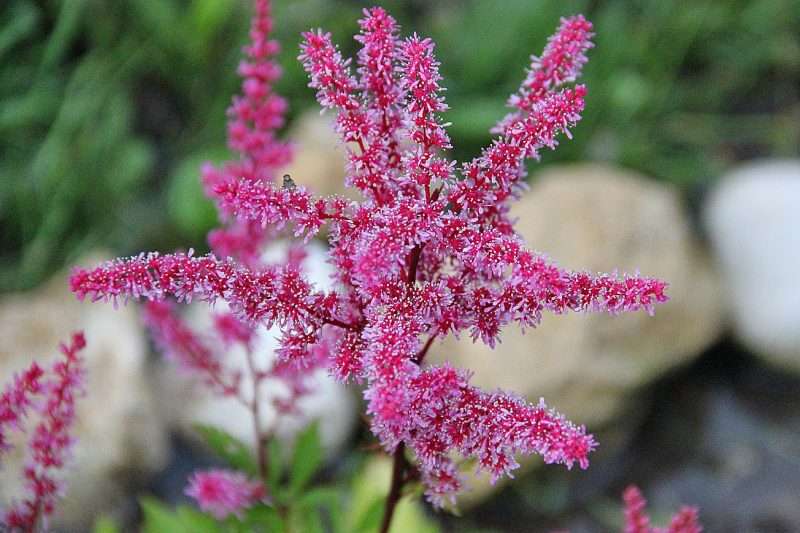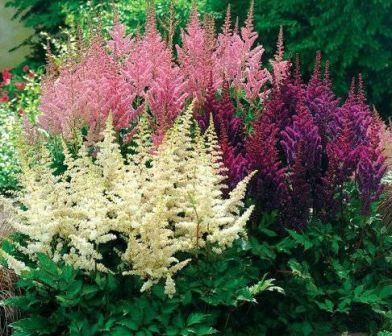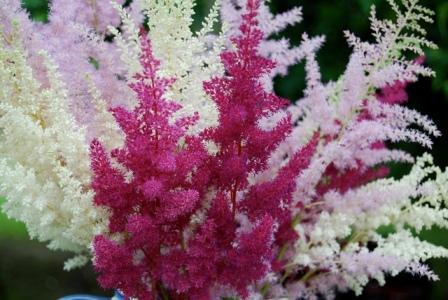Astilba is a striking plant that is gaining more and more space due to its beauty in gardens and flowerbeds. One of the indisputable advantages is the abundance of varieties. The shrub does not need continuous active care. But still, this does not mean that astilbe does not need care in the fall, preparation for winter, pruning or additional shelter. Beginning gardeners are concerned about the question of whether to make a complete cut or cover the plant, whether it is frost-resistant. All this must be known before planting a bush. With the help of this information, you can avoid problems in the future and organize the right timely care.
Content
What is special about astilba care in autumn
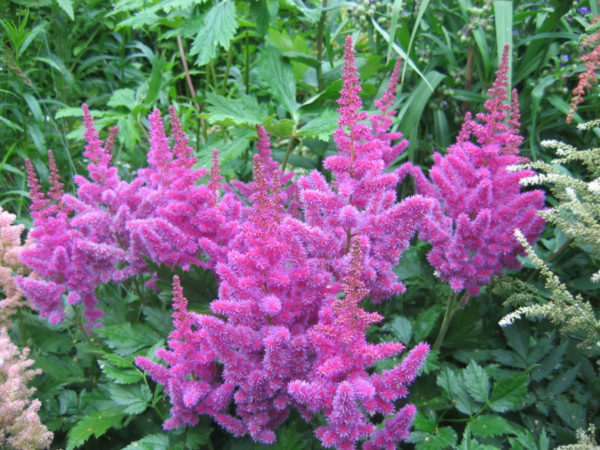 Astilba is a plant that has lived for a couple of decades. It is hardy, survives the cold well. Therefore, often there is a desire to do nothing at all. But in the first year, the bush needs special care. To make it stronger, flower stalks are immediately cut off. Then all the useful substances will not go to flowering, but will be directed to the development of roots. The soil must be loosened to ensure regular air exchange, watered. Near young plants all weeds are removed, but overgrown astilba she then pushes them.
Astilba is a plant that has lived for a couple of decades. It is hardy, survives the cold well. Therefore, often there is a desire to do nothing at all. But in the first year, the bush needs special care. To make it stronger, flower stalks are immediately cut off. Then all the useful substances will not go to flowering, but will be directed to the development of roots. The soil must be loosened to ensure regular air exchange, watered. Near young plants all weeds are removed, but overgrown astilba she then pushes them.
Shrubs that are 5-6 years old also require care. The roots by this time are already actively growing, their sensitivity to cold increases. Therefore, the soil near the bush is not only mulched, but also covered with non-woven material.
The whole process astilbe care in autumn and preparing the flower for wintering consists of three stages:
- Top dressing.
- Trimming peduncles and dry stems.
- Covering the soil with mulch and fabric.
Pruning astilbe in autumn
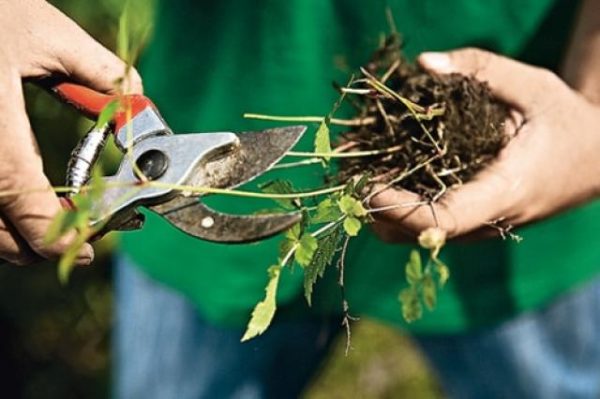 Different varieties of shrubs bloom at different times from about the beginning of summer to autumn. You can cut the faded buds not immediately, but a little later, because dry flowers also look beautiful, creating the illusion of long flowering.
Different varieties of shrubs bloom at different times from about the beginning of summer to autumn. You can cut the faded buds not immediately, but a little later, because dry flowers also look beautiful, creating the illusion of long flowering.
For pruning, gardeners use a conventional garden pruner, which is previously disinfected in a solution of potassium permanganate. It happens that one shrub is infected with the disease, and to prevent the transfer of bacteria to the rest, the tool is disinfected after each pruning procedure.
Why cut astilbe in the fall
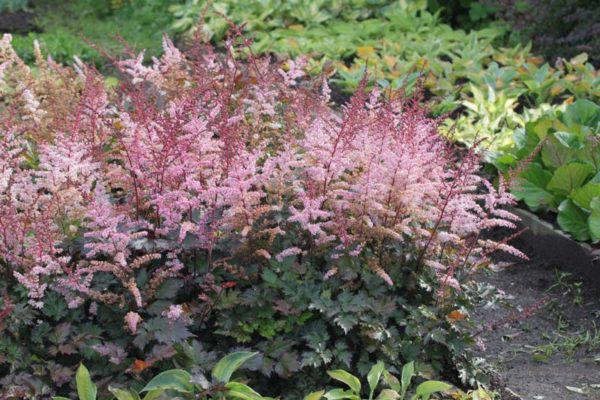 Cut the astilbe before laying the seeds. The flower spends too much energy on this, which could be directed to strengthening the roots and the accumulation of beneficial substances. Some gardeners prune away fading flowers immediately, some leave them longer. But after the first frosts, flower stalks and stems are cut almost the entire length, because it is easier to shelter the bush from frost.
Cut the astilbe before laying the seeds. The flower spends too much energy on this, which could be directed to strengthening the roots and the accumulation of beneficial substances. Some gardeners prune away fading flowers immediately, some leave them longer. But after the first frosts, flower stalks and stems are cut almost the entire length, because it is easier to shelter the bush from frost.
For beginning gardeners, the question arises when is it better to deal with the removal of stems and leaves: in spring or autumn. Typically, peduncles and stems are removed in the fall. But, if you do not need to cover the astilbe for the winter, then you can cut the stems in the spring.
When to crop astilbe
The date of pruning varies depending on the area in which the flower grows, and on the variety.Stems begin to be removed after the onset of frost, and in different parts of the country it colds in different months. On average, astilbe stems are cut from the beginning of October to mid-November.
How to trim astilbe in the fall
Inexperienced gardeners are afraid to cut the stems too deep and leave stumps 20 cm high. Such long prunings are difficult to cover for the winter, and it does not look very neat. Therefore, they are removed strictly under the root, but so as not to affect the kidneys, which are formed just above the soil in the basal part. After that, they cover the bush, sprinkle with a layer of mulch. It is desirable to carry out pruning annually, at about the same time.
Care after trimming
Trimming the astilbe is not enough, the bush needs to provide comfortable conditions even after that. Then in the future it will bloom profusely and look attractive in the garden. The birthplace of astilbe is mountainous terrain, and this explains the fact that the plant tolerates winter cold perfectly. But there are also snowless winters when the bush needs mandatory protection.
The root system of mature plants in the winter is warmed and fed. Additionally, gardeners mulch the soil to get lush blooms next season.
Mulching
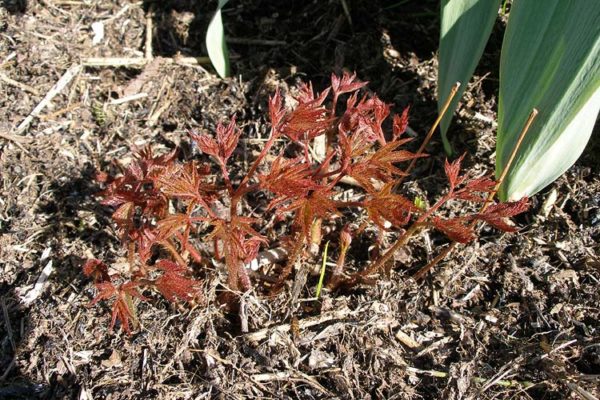 Sheltering the soil around the mulch shrub helps protect the root system and young buds from freezing. Cover the soil and the trimmed bush with a layer of mulch of 15-20 cm. For mulching use
Sheltering the soil around the mulch shrub helps protect the root system and young buds from freezing. Cover the soil and the trimmed bush with a layer of mulch of 15-20 cm. For mulching use
- peat;
- rotted manure;
- dry sawdust;
- humus.
Florists use shallow bark as a covering layer. This material also helps protect roots and buds from low temperatures.
Fertilizer
In winter, the flower must be fertilized. Thanks to this, astilba tolerates cold well, blooms beautifully magnificent next spring. For this, phosphorus-potassium fertilizers are suitable. About 20 g of substance is added to one bush.
In addition, humus is additionally added to the soil. The plant prefers soils rich in nutrients, so gardeners enrich it with organic mixtures before freezing.
Astilba Shelter in the Winter
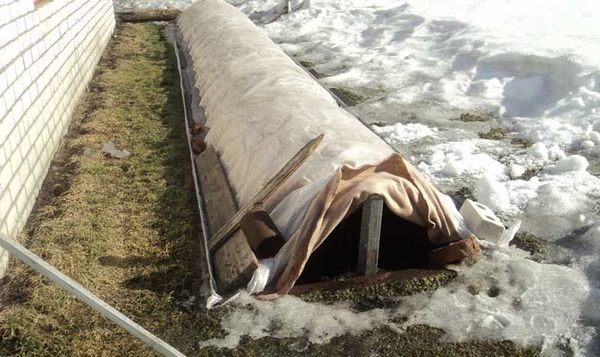 In the southern regions of the country, growing these bushes is less difficult. There is no need to cover Astilba for the winter, because even overgrown roots are warm. Winters in the south are warm, and the plant feels comfortable in such conditions. But in those places where winters are harsh, cold or snowless, shrubs need protection from frost. Therefore, astilbe must be covered there.
In the southern regions of the country, growing these bushes is less difficult. There is no need to cover Astilba for the winter, because even overgrown roots are warm. Winters in the south are warm, and the plant feels comfortable in such conditions. But in those places where winters are harsh, cold or snowless, shrubs need protection from frost. Therefore, astilbe must be covered there.
Is it obligatory to cover astilba in winter
Astilba is classified as a plant that tolerates low temperatures well down to -25 ° C. The aboveground parts of the bush will survive the cold winter, but the roots are likely to suffer. The roots of plants that are more than 5 years old are especially sensitive. They grow close to the surface of the soil and freeze if not covered. Together with the roots, kidneys can suffer from cold. Which will lead to a rare and slow blooming of buds. Therefore, covering an astilbe is no less important than cutting its stems.
We cover the bush correctly
Young, only planted plants cause less trouble. Florists spud the trimmed shrubs and cover the soil around the roots with a thin layer of mulch. Mature plants need to be sheltered more thoroughly. In particular, if winters turn out to be cold and there is very little snow, or if after a thaw in spring, another frost sets in. In these cases, gardeners form a fence of boards, sticks, stones or bricks.A layer of textile material is laid on top, the edges are pressed with stones so that they are not blown away by the wind.
Pre-winter preparation of astilba in different climatic conditions
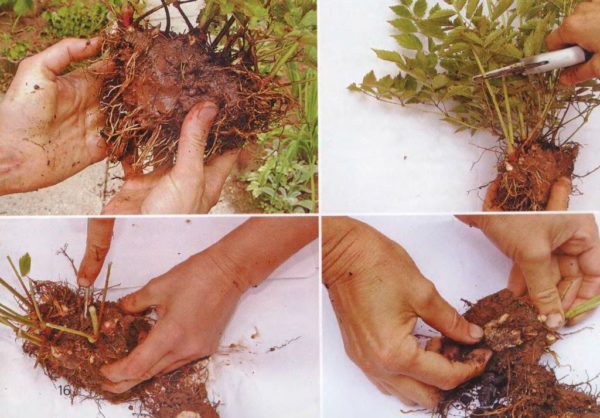 Since the regions of Russia differ in climatic conditions, astilba requires different preparations for winter, depending on the habitat. In some areas, it is enough to cover the shrub with a layer of mulch, and in others this will not save the plant from freezing.
Since the regions of Russia differ in climatic conditions, astilba requires different preparations for winter, depending on the habitat. In some areas, it is enough to cover the shrub with a layer of mulch, and in others this will not save the plant from freezing.
- The middle lane. If in the suburbs they expect not too frosty but snowy winters, the soil near the bush is only mulched. Sometimes they cover the plant with pine spruce, straw or other material, a fabric that provides access to fresh air. Due to this, the soil does not vypryvaet under the cover layer.
- Volga region. In the Volga region, winter time is quite warm, so you can limit yourself to the same actions as for the middle lane.
- Ural and Siberia. Winters are very severe in these regions, so a layer of mulch will not be enough. Ural and Siberian land sometimes freezes to a meter in depth. Therefore, a frame is built around the trimmed bush, on which air-passing material is hung.
Astilba transplant in autumn
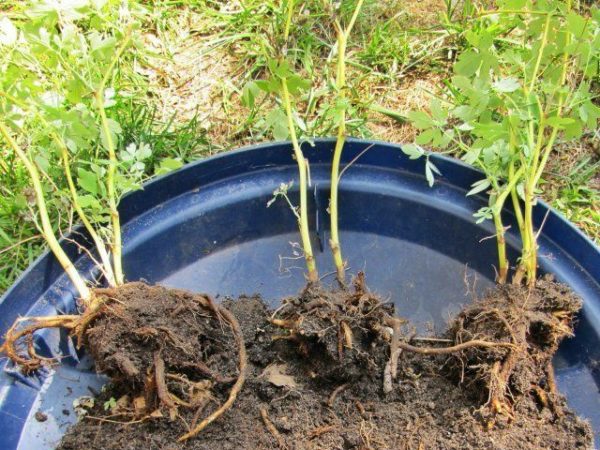 Astilbe bush needs constant moisture, so experienced flower growers recommend replanting the plant after flowering. In early September or late August, the sun is not so active, and there is enough moisture.
Astilbe bush needs constant moisture, so experienced flower growers recommend replanting the plant after flowering. In early September or late August, the sun is not so active, and there is enough moisture.
A shrub is transplanted in order to achieve a denser flowering. The mature astilbe does not look so attractive, and the roots growing up are exposed to severe cold. With the help of a transplant, she is revived. This should be done every 4 years.
Be sure to use a sharp knife when dividing the shrub so as not to harm the plant. The entire root system is usually cut into several parts so that in each new bush there are 3 intact kidneys. The roots are placed in a container with water so that the plants begin to independently develop and give a fresh growth.
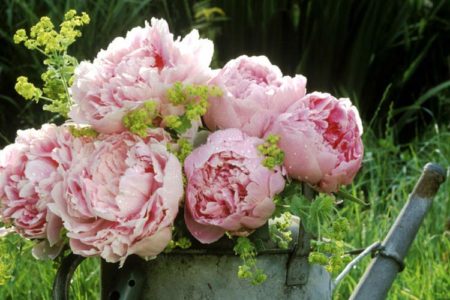 You may be interested in:
You may be interested in:When planting, flower growers with experience leave a distance of half a meter between the bushes. Astilba should grow, and leaves and branches need a place. At what depth to plant, determined by the kidneys. They should be approximately 4-5 cm above the soil. After that, a non-thick layer of mulch is covered with about 2 cm. This will help to maintain moisture and avoid the appearance of weeds.
Common fallacy astilbe care mistakes
Astilba is a frost-resistant plant, relying on this, inexperienced flower growers make mistakes when preparing the bush for wintering and autumn care. With improper care, the shrub blooms less and then completely dies. You need to know which errors are most common:
- Lack of fertilizer in the fall.
- Incorrect pruning of astilbe in the fall (or its complete absence).
- Lack of mulching layer or additional shelter for shrubs.
Finally
Florists appreciate Astilba for its unpretentiousness and stability. In addition, the plant looks attractive in the garden even after the flowers wilt. Despite the fact that the plant is considered a perennial, it needs care throughout its entire life.Autumn care, preparation for cold weather are important activities that need to be done on time and correctly. This will help to get a densely flowering healthy plant from year to year.

